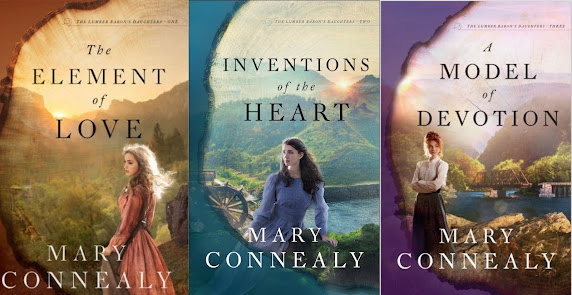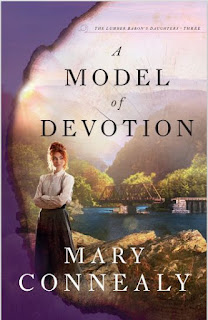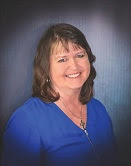In February I talked about Make a character likeable by making someone like them, linked below. In March I talked about Character Arcs, linked below
This month I’m talking about
making characters quirky.
1.
Make a character likeable by making someone like them
3.
Give them quirks
4.
My main character types
5.
Avoid backstory dumps
Give them quirks. Quirks become a deep reflection of their true character and become a reminder of a rich backstory.
The thing that comes to mind with this one is, you need
to get a piece of information to the reader and have the hero say it. Then
later you change your mind about how to write the story and decide instead to
impart this piece of information by having the heroine say it, it’s not enough
to change the sentence tags. The ‘he said to she said’.
That whole sentence should be in her voice. The words
should change. That part of quirks comes down to giving a character a voice
that is uniquely hers. The heroine of my WIP is a seamstress. The hero is the
overwhelmed widowed homesteading father of three girls. He has no idea what
three half-grown girls need. These two do not choose the same words when they
speak. They don’t have the same emotions behind their words. This should always
be reflected in their reactions, their dialogue, their thoughts.
She thinks in turns of mending a rift, stitching ideas together, fitting pieces, finding patterns. He thinks
in terms of the land, planting, cattle, chores. These two don’t speak in the same way about the same thing. That’s a character’s voice.
I’ve used a lot of quirks is my soon-to-be released
romance The Element of Love, book #1 of a new series. The opening of this speech
is the opening of The Element of Love. My heroines are three brilliant sisters.
Educated far beyond what was normal for women in 1870 California. As the
daughters of a lumber baron, they are being raised to take over the dynasty he
built. They’ve been educated as engineers in a time when the word engineer was
a single catch-all description of applied science. Now there are computer
engineers, chemical engineers, nuclear engineers, you name it there’s an
engineer behind the break-throughs in that field. They are the men and woman
applying the science of the day to the real world.
But back then they barely use the term engineer. I found
the term civil engineer and those were builders. They were the men (and in my
case the woman) who built the trestles across vast, deep, rugged gorges to
build the Transcontinental Railroad.
Anyone who cana get there, should go see the Union Pacific Museum in Council Bluffs. Those trestles and bridges, the holes blasted in mountains, they are all a wonder. A marvel, especially for that era. 1870 was the heart of the industrial revolution. Inventions and progress in all areas was booming. I found out through my research that a self-propelled tractor already existed. It was really new. The tractor engine had been around for a while, but horses had to pull what they called a traction engine to where it was needed to work. But just before my book begins, they’d learned to hook wheels to the engine and then use that engine to drive the engine to where it was needed.
That’s part of the foundational invention behind the car.
My heroine in book one, The Element of Love is a chemical
engineer before that was a thing. She and her sisters had as their dream, after
the death of their father, to build his long-desired train tracks to the top of
his mountain to haul logs down and haul supplies and people up. Heroine #1 has
learned how to handle chemicals, most especially dynamite. She’s learned to survey
rugged land so she can blast holes in mountains from opposite sides, working
toward the middle. It went twice as fast as working from one end and going all
the way through.
My heroine in book two is an inventor, a mechanical
engineer and she’s not working on fun, womanly things like improving the sewing
machine or inventing a clothes washer. She’s working on the braking system of a
train. She’s improving the undercarriage of train cars so they can bear the
weight of tons of logs. And her dream is to invent the four-stroke cycle
engine, today called the internal combustion engine. It was an invention that
had been theorized but had never yet been built. She’s got big dreams and just
a nice underlying thirst for fame and fortune, which would come if she could
just get that engine invented.
My third heroine is a civil engineer. She’s the one building those trestles, telling people how to use the iron she’s ordered to build a bridge and make sure the trestle won’t collapse under tons of logs and that massive iron train engine. I had them think in chemical terms and inventing terms, science terms and construction terms.
It’s tricky trying to create characters who are smarter
than I am. I’m not sure I entirely succeeded. I’d say I’m pretty word smart.
But these women knew math and science. They thought in term of height and
weight, but also altitude and latitude, stress metal and force multipliers. I
had to do a lot of research just to let them speak and then, of course, I
couldn’t let them say stuff that was convoluted and inaccessible and, let’s
face it, boring.
So my brilliant sisters were tricky and very quirky. I
also set out from the beginning to figure out a way that my heroines were in a
place of peril at the end of each book and she used her scientific, engineering
skills to save herself. Which was challenging and fun.
These women were quirky.






This series looks fun, Mary. I look forward to reading it. I need to get to that train museum in Council Bluffs. My husband has gone there when he has dropped me off at our Christmas parties. He enjoyed it.
ReplyDeleteThat train museum is so cool. I went with Lorna Seilstad and her dad worked for Union Pacific and the tour guide (or just the guy running the place, not a specific tour) got to talking trains. It was fantastic.
Deletei always love your characters' quirks, Mary :)
ReplyDeleteMary, these characters sound amazing! I think it must've been fun to come up with their quirky language, etc. I think it'll make those stories fun to read!
ReplyDeleteThanks, Missy. It was fun but it's tricky to many people smarter than me...cuz how can I know if I've got it right????
DeleteQuirky characters are interesting characters!
ReplyDeleteI love this: "These two do not choose the same words when they speak. They don’t have the same emotions behind their words. This should always be reflected in their reactions, their dialogue, their thoughts."
It's hard work to make sure my characters sound like themselves and not just another aspect of my own personality! Word choice is one thing - and when I'm writing the first draft, that's pretty much all that distinguishes one character's dialogue and inner thoughts from another's - but getting the goals and motivation, desires, dislikes, etc into the character takes digging. You really have to know that character before you can make them come alive on the page like that.
Hmmm... That's pretty much what creating characters is all about, isn't it?
Thanks for this great post, Mary!
Thanks, Jan. I almost named a character Drexler yesterday, then I second-guessed myself. Especially since I may have to shoot her later!!!
DeleteSmart Women - what a thing for Smart Men to have to contend with back in the 1870s! These ladies grew up nurturing their engineering skills without realizing it. What others see as quirky, they treat as common. What a fascinating look into a family whose father embraces his daughters and expects them to be as competent as he!
ReplyDeleteGreat post, Mary!
Aw, thanks, Audra. I loved making them smart and having their father and mother be proud of them for that and train them to take charge of a huge company.
DeleteI can't wait to read these books!
ReplyDeleteThanks, Glynis. All three coming out this year. Next one, Inventions of the Heart, coming in July!
DeleteI love that you married these gals to science before they fall in love with men... You know how much I love science! I look back at where science (real science, not pandemic pretend science) has brought us and deepened our understanding of how and why things work, and how amazing is our God to have created such a place... a place that lets nature and intelligence move forward... These girls won my heart!
ReplyDeleteThe Periodic Table is fascinating. Really cool to read about. They came up with all these elements, then someone theorized, due to Atomic weight, which...who knew there was such a thing back that far!!!...that there must be other elements because of the GAPS in atomic weight. So they laid out the table with the gaps, then slowly for years and years they'd identify these missing elements. It was amazing to read about all of this.
DeleteI'm sure your heroines drive your heroes crazy...but in a good way. I always love the men in your books, Mary! They are clueless about women, which makes them so loveable!
ReplyDeleteSounds like this series required lots of research! I'm impressed! Congrats, Mary, on your continued success!
It did, Debby. And MATH and SCIENCE research. I read more about Euclid than I'd ever hoped to. Plato. Archimedes. Other names I can no longer remember.
DeleteI read a long time on the periodic table. This era, the 1870s was a wild and exciting time of progress and invention in the math and science arena.
Mary, I love these 3 quirky sisters! It's such fun to have them so smart in scientific things. I'm eagerly awaiting the second book in the series! Thanks for the fun post!
ReplyDeleteThanks, Winnie. I keep hoping I managed it. The next one is the inventor. She was really fun!
DeleteQuirky characters are some of my favorites. Thank you for sharing. Blessings
ReplyDeleteI'm impressed you tackled STEM careers in historical! I wasn't one of those students who "got" it. Lol looking forward to reading this series and your quirky characters. :)
ReplyDelete